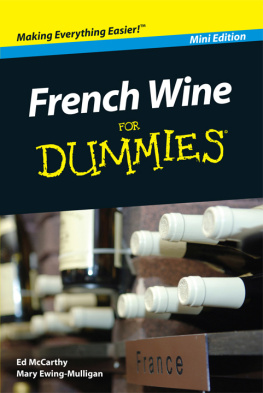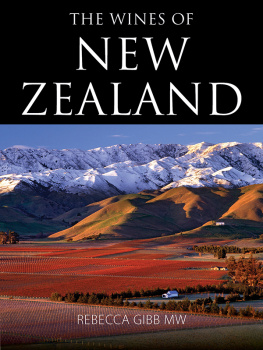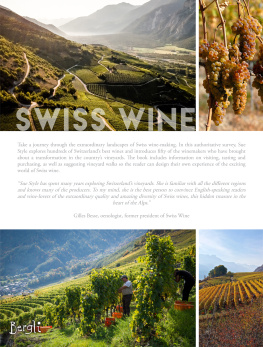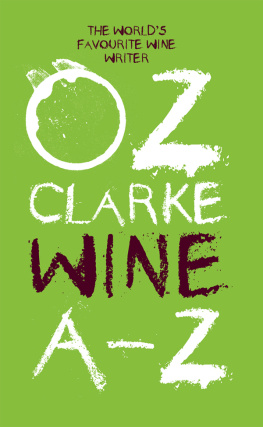Planet of the Grapes
PLANET OF THE GRAPES
A Geography of Wine
Robert Sechrist

Copyright 2017 by Robert Sechrist
All rights reserved. No part of this publication may be reproduced, stored in a retrieval system, or transmitted, in any form or by any means, electronic, mechanical, photocopying, recording, or otherwise, except for the inclusion of brief quotations in a review, without prior permission in writing from the publisher.
All illustrations in the text are by Ryan Brown.
Library of Congress Cataloging-in-Publication Data
Names: Sechrist, Robert P.
Title: Planet of the grapes : a geography of wine / Robert Sechrist.
Description: Santa Barbara, California : Praeger, an imprint of ABC-CLIO, LLC, [2017] | Includes bibliographical references and index.
Identifiers: LCCN 2016058638 (print) | LCCN 2016059489 (ebook) | ISBN 9781440854385 (alk. paper) | ISBN 9781440854392 (ebook)
Subjects: LCSH: Wine and wine making. | Wine districts. | Wine industry.
Classification: LCC TP548 .S4655 2017 (print) | LCC TP548 (ebook) | DDC 663/.2dc23
LC record available at https://lccn.loc.gov/2016058638
ISBN: 978-1-4408-5438-5
EISBN: 978-1-4408-5439-2
21 20 19 18 17 1 2 3 4 5
This book is also available as an eBook.
Praeger
An Imprint of ABC-CLIO, LLC
ABC-CLIO, LLC
130 Cremona Drive, P.O. Box 1911
Santa Barbara, California 93116-1911
www.abc-clio.com
This book is printed on acid-free paper 
Manufactured in the United States of America
Contents
Preface
All night I drink, and study hard all day: Bacchus and Phoebus hold divided sway.
Martial
I wrote this book to help others understand the fundamental role wine played in past civilizations, in the shaping of the modern world, and the pivotal role wine plays in modern geography, society, and economy. This role is expressed in the landscapes, trade patterns, and economic structures of many nations. Adored and abhorred, wine is unique among all global commodities. The cultural, historical, economic, social, religious, and medical significance of wine is not given its due in the American educational system, a wrong I hope to partially correct with this book. My title, Planet of the Grapes, refers to the pervasive importance that fermented grape juice had and continues to have in world affairs. Pierre Boulle, I apologize.
Geography is the science that studies patterns, flows, and distributions in and on the earths surface and beyond. Geographers identify what makes places unique, what makes them similar, what is possible at a location (climatically, biologically, agriculturally, technologically, or socially), and what is not possible, the ebbs and flows of phenomena across the earths surface, and the interaction of phenomena in space. Many geographic principles, theories, and methods are exemplified here by studying the spatial distribution, patterns, and place interactions resulting from the human love affair with wine. The models discussed in the following pages apply to wines discovery, its spread, its transport, its role in globalization, its trade, its character, its spatial variability, its role in society, its manufacture, its horticultural practices, its flavors and aromas, its lovers, and its detractors.
Vitis vinifera, the wine grape, is endlessly variable; even clones show changes. Each seed carries a unique vine, a new variety. Successful seeds have characteristics suited to the local environment. Each seedling emerges in a unique location and experiences unique conditions. Prehistoric peoples over many generations went from eating ripe grapes once a year, to nurturing particular plants, to creating vineyards and wineries. How grapes from those vines became wine (the symbol and the drink) results from the cultural and geographic heritage of Western civilization.
The varietal distribution of wines is an interpretation of physical, cultural, and economic geography. Economic geography evaluates the shape and structure of the global flow of wine from source (vine) to destination (mouth). Among those who consume wine, knowledge of geography improves their ability to select wine based on the character of regional variations in wine production methods. Tastes and aromas trigger memory. Knowledge of the local environmental characteristics and tradition enhance the wine drinking experience by tying those pleasant (and even unpleasant) memories to the specific flavors and fragrances of a specific wine.
Reflect on the quotations that introduce each chapter and you begin to appreciate the depth of the role of wine in Western society, from the transformative act of domesticating a wild man with wine (as portrayed in the Epic of Gilgamesh and the Greek rise from barbarism) to modern political battles regarding public access to alcoholic beverages.
One indication of the importance of wine in Western civilization is reflected in the number and location of places named for wine or for the vine. Vienna, Austria and Venice, Italy are the two most prominent European cities whose name translates as wine. In the United States many towns have a Vine Street, Concord is a common town name. Many regional names have also become synonymous with the types of wines produced there. Champagne, Port, Burgundy, Tokay, and Marsala are just a few wine place names protected by international agreement.
To maximize your experience, I suggest readers do two things. First, visit your local wine merchant. Examine the bottles, varieties, and styles that correspond to the portion of this text you are reading. Second, take the words of the Roman poet Martial (above) to heart and accompany the reading of each section with a glass of the appropriate wine.
Indiana, Pennsylvania
A Note on Numbers and Maps
Standard conventions are followed when recording and reporting numbers. Dates are presented in years BCE and CE. BCE ended about 2015 years ago. Whenever possible statistics are presented in their native, published, measurement units. Measures of area are generally presented in acres, thousands of acres, or hectares (2.5 acres). Volume is either in gallons or hectoliters (100 liters or 26.4 gallons), depending on the source. Tonne(s) refers to a weight of 1,000 kg and tons refers to 2,000 lbs. Descriptions of bottle and barrel sizes, capacities, and additional measures can be found in .
The maps accompanying the text are simple and general references to major wine regions. There are two sources I recommend for accessing high-quality detailed maps of wine regions. The first is the Society of Wine Educators online wine maps at: http://winewitandwisdomswe.com/wine-spirits-maps/wine-maps-2015-csw-study-guide/. Produced by Bill Lembeck, they show all the worlds wine regions in a consistent format. The second source is the World Atlas of Wine by Hugh Johnson and Jancis Robinson. This volume contains large-scale topographic maps of wine regions and vineyard locations. A third set of sources are the regional and national websites promoting each regions wine. However, while often quite informative individually, these often lack consistency and availability across regions.
Introduction: The World of Wine
When it comes to wine, there is no ingredient more important than location. The land, air, water, and weather where grapes are grown are what make each wine unique.
Origins.wine
The world of wine was much simpler just a few years ago. At the beginning of the millennium New Zealands Sauvignon Blanc swept the planet as
Next page













